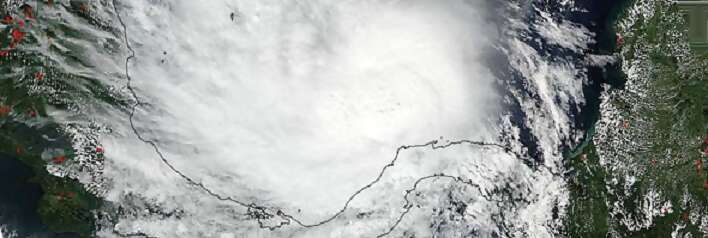HURRICANE ON THE MOVE Caribbean coast border of Nicaragua and Costa Rica
Posted on 11/24/2016 | About Nicaragua

Hurricane Otto churned toward the sparsely-populated Caribbean coast border of Nicaragua and Costa Rica early Thursday as an unusually strong late-season storm. Heavy rains from the storm were blamed for three deaths in Panama. Otto was forecast to make landfall Thursday in Nicaragua, just north of the Costa Rican border.
Officials in Costa Rica ordered the evacuation of 4,000 people from its Caribbean coast and called off school nationwide for the rest of the week. Heavy rain was already causing flooding in some areas and the president announced that public employees would not have to work Thursday or Friday.
The country's National Meteorological Institute noted that a hurricane had never made landfall in Costa Rica since record-keeping began.
Nicaragua also closed schools and was evacuating more than 10,000 people from communities in the storm's path. Heavy rains were expected to affect the entire country on Thursday and Friday, raising the possibility of flooding and landslides in the interior.
The US National Hurricane Center said the storm had regained hurricane strength late Wednesday night, with winds of 85 mph (140 kph), after fluctuating between tropical storm and hurricane status earlier this week.
The storm caused heavy rains in Panama as it moved roughly parallel to that nation's northern coast.
Jose Donderis, Panama's civil defence director, said a landslide just west of Panama City early Tuesday trapped nine people. Seven were rescued but two were pulled from the mud dead. In the capital, a child was killed when a tree fell on a car outside a school.
Panamanian authorities cancelled school and began to release water from the locks and lakes feeding the Panama Canal.
Costa Rican President Luis Guillermo Solis said Otto could damage the country's important coffee and agriculture sectors.
Nicaragua also feared damage for impoverished farmers and to coffee crops that are almost ready for harvest.
Otto “could seriously jeopardize food security for small-holder farmers who rely on maize, beans, cocoa, honey, coffee and livestock for their livelihoods,” said Jennifer Zapata, a regional director for Heifer International, a US-based anti-poverty group.
Early Thursday, Otto was moving west near 8 mph (13 kph) and was centred about 80 miles (130 kilometres) southeast of Bluefields, the hurricane centre said.
